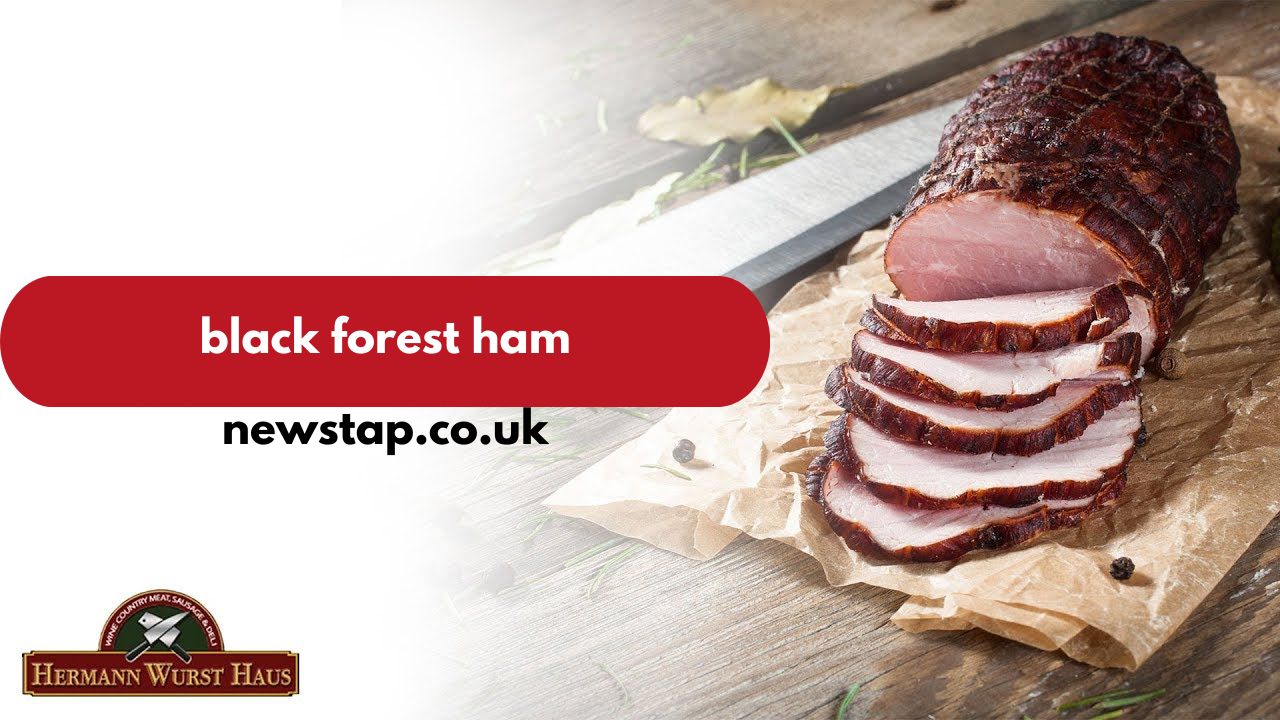Short Title: Black Forest Ham: Origins, Uses, and More
Introduction to Black Forest Ham
Black Forest ham is a unique and flavorful type of ham that has gained popularity around the world. Known for its distinct smoky flavor and rich, savory taste, this ham originates from the Black Forest region of Germany, renowned for its culinary traditions and high-quality meats. With its complex preparation process and history rooted in European cuisine, Black Forest ham has become a favorite choice for ham enthusiasts and chefs alike. But what is Black Forest ham exactly? In this article, we will explore its origins, the process of making it, its distinct characteristics, and why it’s so popular today.
What is Black Forest Ham?
Black Forest ham is a variety of dry-cured, smoked ham that originates from the Black Forest region (Schwarzwald) of Germany. Unlike other types of ham, which may be boiled or lightly smoked, Black Forest ham is characterized by a much more intense flavor due to the process of smoking and air-drying. The ham is made from the hind leg of a pig, which is carefully seasoned and then smoked using a mix of traditional wood, such as pine or fir, often found in the Black Forest area.
The “Black Forest” name is reserved for hams that meet specific criteria, including the traditional methods of preparation and the use of specific smoking techniques. The flavor of Black Forest ham is smoky, savory, and slightly salty, with a rich depth that makes it stand out from other cured meats. It’s a staple in German cuisine, often enjoyed in sandwiches, on charcuterie boards, or as part of various traditional dishes.
The Origin of Black Forest Ham: A Culinary Tradition
The roots of Black Forest ham trace back to the Black Forest region in southwestern Germany. The area’s cool, moist climate and dense forests made it an ideal place for curing and smoking meats. The tradition of making Black Forest ham began centuries ago, as local farmers and butchers discovered that smoking ham was an effective way to preserve it for longer periods. In fact, the unique curing and smoking process used in Black Forest ham dates back to the early 18th century.
Historically, the Black Forest region was a secluded area, which meant that many traditional food preservation methods were developed in isolation from the rest of the world. The dense forests provided an abundant supply of wood, which became the key ingredient in the ham’s smoking process. Over the years, the production of Black Forest ham became an important industry in the region, and the product gained recognition for its exceptional quality.
The Process of Making Black Forest Ham
The production of Black Forest ham involves several intricate steps, each contributing to the unique flavor and texture of the finished product. Here’s a breakdown of the traditional method of making Black Forest ham:
- Selection of Meat: Black Forest ham is made using the hind leg of a pig, which is carefully selected for its marbling and quality. The meat is usually fresh, and it is cleaned and prepared for curing.
- Curing: The ham is rubbed with a mixture of salt, sugar, and a blend of spices, including garlic, pepper, and juniper berries. This curing process draws out moisture from the meat, which helps to preserve it.
- Drying: Once cured, the ham is left to dry for several weeks. This step is essential for the ham to develop its characteristic texture and flavor. The drying process also contributes to the preservation of the meat.
- Smoking: After drying, the ham is smoked over a low, slow fire using wood from trees native to the Black Forest, such as pine or fir. The wood smoke imparts a deep, rich smoky flavor that is one of the defining characteristics of Black Forest ham.
- Aging: After smoking, the ham is left to age for several months, allowing the flavors to further develop and intensify. During this time, the ham becomes firmer and more concentrated in flavor.
The meticulous nature of this process is what makes Black Forest ham so distinctive and highly regarded. The combination of curing, drying, smoking, and aging results in a delicious, savory ham with a complex flavor profile.
Characteristics of Black Forest Ham
Black Forest ham is easy to identify thanks to its rich, dark exterior and delicate, pinkish interior. It has a firm texture and a pronounced smoky flavor, balanced by a slight sweetness due to the sugar used in the curing process. The ham’s deep red color is another signature characteristic, which comes from both the curing spices and the natural aging process.
In terms of taste, Black Forest ham is often described as having a slightly sweet, smoky, and savory flavor, with just enough saltiness to enhance the overall profile. The distinctive smokiness is the result of the slow-smoking process, which imparts an intense depth to the meat without overwhelming its natural flavors.
Popularity and Uses of Black Forest Ham Today
Today, Black Forest ham is widely enjoyed around the world. It has gained a reputation as a gourmet product and is featured in a variety of culinary applications. In Germany, it’s a beloved ingredient in many traditional dishes, such as sandwiches, salads, and savory pastries.
In addition to its popularity in German cuisine, Black Forest ham has found its way into international markets, where it is often featured on charcuterie boards, used in sandwiches, or paired with cheeses and fruits. Its versatility and distinctive flavor make it an ideal addition to a wide variety of dishes.
One popular brand that offers Black Forest ham is Member Mark, a private label brand known for its high-quality meat products. The Member Mark Black Forest Ham is praised for its authentic taste and superior quality, making it a favorite among consumers. The Member Mark Black Forest Ham price in Ames is known to be affordable for the quality it offers, making it a popular choice for shoppers in the region.
Black Forest Ham in Modern Cuisine
While Black Forest ham has a long history, it continues to play a significant role in modern cuisine. Its ability to elevate both simple and elaborate dishes makes it a favorite ingredient among chefs and home cooks alike. In addition to being enjoyed on its own, Black Forest ham is often used in gourmet sandwiches, served alongside artisanal breads, and paired with fresh vegetables or cheeses.
Another modern trend is the use of Black Forest ham in pasta dishes, where its smoky flavor adds depth to creamy sauces. It can also be incorporated into breakfast dishes, such as omelets and frittatas, for a savory kick. Its versatility in the kitchen makes Black Forest ham an easy way to add a touch of elegance to a variety of meals.
Conclusion
In conclusion, Black Forest ham is much more than just a type of cured meat. It’s a product with centuries of tradition, a carefully crafted preparation process, and a distinct smoky flavor that has captured the taste buds of many. Whether enjoyed in a classic German dish or used in modern culinary creations, Black Forest ham continues to be a cherished ingredient in kitchens around the world.
From the origins of the Black Forest industries that first perfected the art of curing and smoking ham, to the popularity of brands like Member Mark, which brings Black Forest ham to a wider audience, this ham has truly earned its place in the culinary world. So, the next time you ask, “What is Black Forest ham?” remember that it’s a flavorful, versatile, and richly historical product that has stood the test of time



